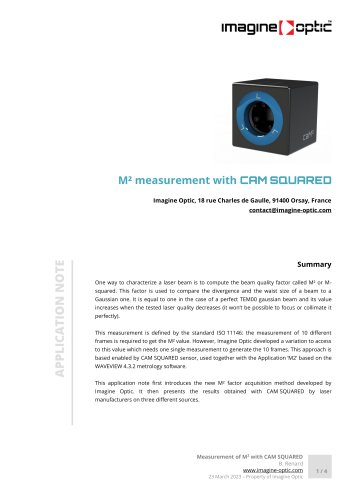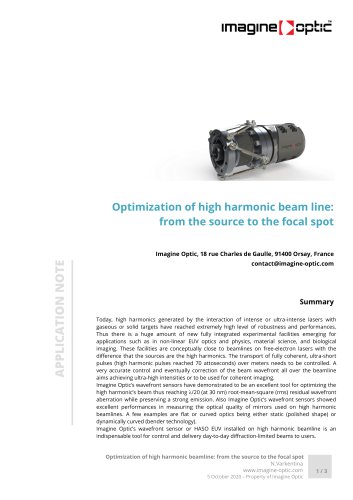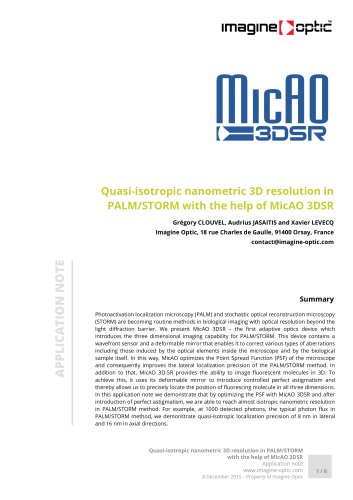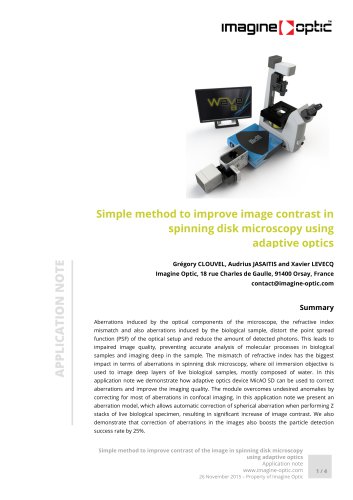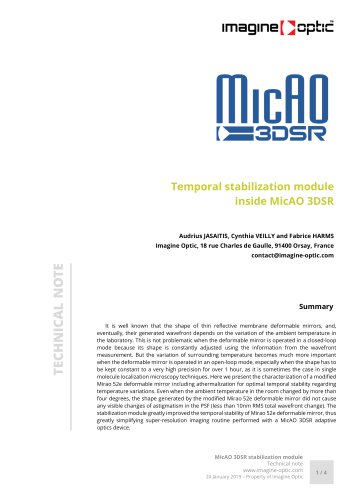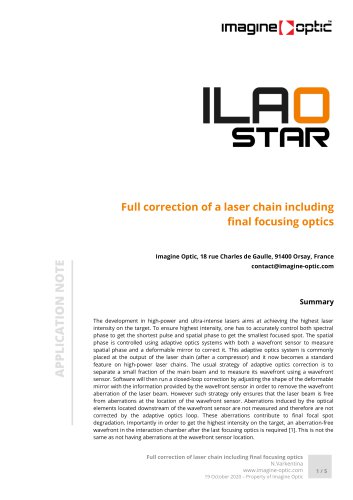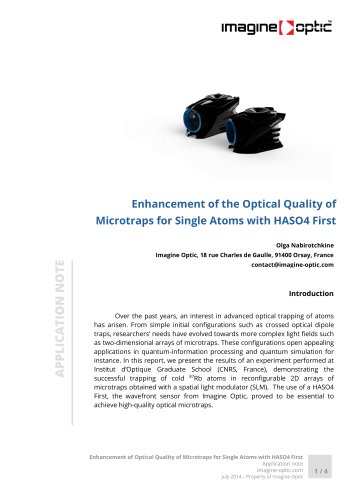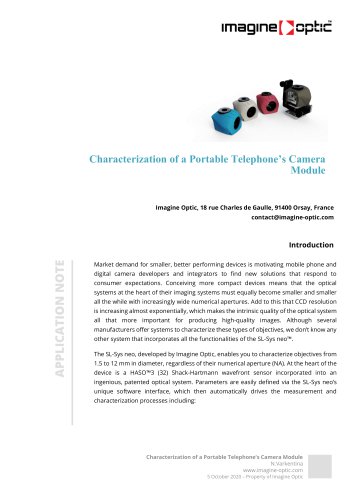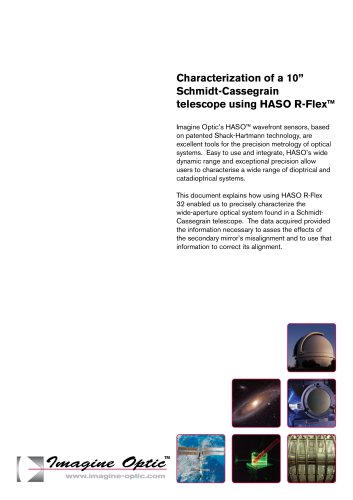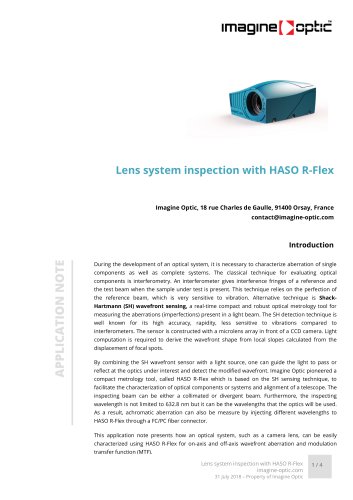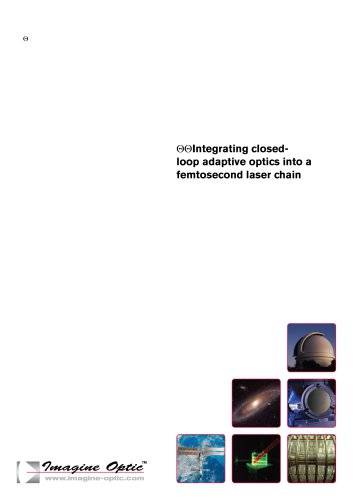
Catalog excerpts

M² measurement with Imagine Optic, 18 rue Charles de Gaulle, 91400 Orsay, France contact@imagine-optic.com Summary One way to characterize a laser beam is to compute the beam quality factor called M² or Msquared. This factor is used to compare the divergence and the waist size of a beam to a Gaussian one. It is equal to one in the case of a perfect TEM00 gaussian beam and its value increases when the tested laser quality decreases (it won’t be possible to focus or collimate it perfectly). This measurement is defined by the standard ISO 11146: the measurement of 10 different frames is required to get the M² value. However, Imagine Optic developed a variation to access to this value which needs one single measurement to generate the 10 frames. This approach is based enabled by CAM SQUARED sensor, used together with the Application ‘M2’ based on the WAVEVIEW 4.3.2 metrology software. This application note first introduces the new M² factor acquisition method developed by Imagine Optic. It then presents the results obtained with CAM SQUARED by laser manufacturers on three different sources. Measurement of M2 with CAM SQUARED B. Renard www.imagine-optic.com 23 March 2023 – Property of Imagine O
Open the catalog to page 1
I. M² computation: how does Imagine Optic challenge the status quo? The M² factor is defined by the international standard ISO 11146 as: πw0 θ M2 = λ Where Θ is the beam divergence, w_0 is the beam waist and λ is the wavelength (cf. Figure 1). Figure 1: Beam parameters used to compute the M² M² is greater or equal to 1. Unity means the laser presents a perfect Gaussian beam and can be perfectly collimated (if divergent) or focused (if collimated) as in Fig. 2 below. wavefront measurement and an intensity map at the same time. Then, from these N intensity maps, the M² value is computed...
Open the catalog to page 2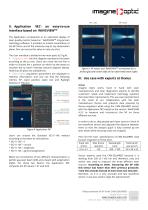
II. Application ‘M2’: an easy-to-use interface based on WAVEVIEWTM The Application corresponds to an optimized display of laser quality metrics based on WAVEVIEWTM long-proven metrology software. It provides an instant visualization of the M² factor and of the intensity map at any observation plane. One can access this value in only one shot. The User Interface is divided in two main parts (cf. Fig 4): + Diagrams (left): the first diagram represents the beam according to the yz axis. Users can move the red line in order to choose the z position on which he.she wants to visualize the xy beam...
Open the catalog to page 3
Results: Below are reported results on different beam shapes of three different laser references: Conclusion We report a laser diagnostic application consisting in the measurement of the M2 parameter with a simple wavefront sensor. M2 calculation is performed following the reconstruction proposed in the standard ISO 11146, while taking advantage of beam propagation ability of the Shack-Hartmann wavefront sensors to drastically reduce the duration of the measurement procedure. In this specific case, Imagine Optic customer reduced characterization time during production from 2 minutes to a...
Open the catalog to page 4All Imagine Optic catalogs and technical brochures
-
WAVE Suite
3 Pages
Archived catalogs
-
Microtraps
4 Pages
-
AO inside laser chain
5 Pages
-
AO in femtosecond laser
5 Pages
-
Large deformable mirror ILAO
6 Pages
-
NIR optics characterization
6 Pages
-
Telescope characterization
3 Pages
-
absolute measurement
4 Pages
-
HASO R.FLEX
4 Pages
-
HASO3
2 Pages
-
bendAO?
3 Pages
-
HASO?3 WSR Wavefront Sensors
2 Pages
-
HASO R-Flex
3 Pages
-
SL-Sys LIQUID
2 Pages
-
SL-Sys neo
2 Pages
-
HASO™3 Wavefront Sensors
3 Pages

